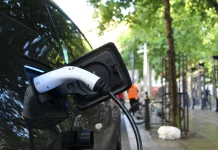Recently, a European Union (EU) report intended to advise policymakers on green hydrogen costs has come under examination. The EU’s Joint Research Centre (JRC) published findings suggesting an optimistic scenario where hydrogen, manufactured and transported from locations such as Ukraine or northern Africa, could cost as little as €3 per kilogram. However, critics argue that the report is overly optimistic, suggesting that the actual costs would be significantly higher, around €8 / kg for industrial purposes and about €14 / kg for transportation, before considering taxes or profits.
JRC’s Credibility Versus Other Institutions
The JRC’s role is to provide scientific advice to EU policy, setting an expectation for high-quality, reliable guidance. Unlike organizations such as DNV or the International Council on Clean Transportation (ICCT), which have been criticized for having biased or flawed reports, the JRC is not supposed to succumb to such pressures. The Potsdam Institute for Climate Impact Research (PIK) is another research body striving for rigorous scientific standards, but even their work has recently been found to have questionable assumptions, particularly regarding green hydrogen pricing.
Understanding the JRC Report’s Core Message
The JRC study, “Assessment of hydrogen delivery options,” focused on the cost-effectiveness of hydrogen transport across Europe. The study was expected to critically examine the viability of importing hydrogen economically from production hotspots like Ukraine or northern Africa. However, it appears from a deeper analysis that this report may have manipulated primary cost assumptions, casting doubt on its conclusions and credibility.
Dissecting the JRC Study’s Assumptions
Upon detailed inspection, the JRC’s study indicates a substantial underestimation in electrolysers’ operating capacity, electrolyzer costs, maintenance and operations (O&M) costs, and pipeline expenses. Real-world data and industry standards point to far greater expected costs than the report projects. Furthermore, the study fails to convincally justify its assumption of remarkably cheap maintenance for hydrogen compressors, which contradicts empirical evidence showing high failure rates.
Comparing Hydrogen Production and Transport Costs
Comparisons with external research, such as studies by the Technische Universität Berlin, showcase a stark discrepancy in cost assessments for producing hydrogen in northern Africa. These external studies indicate production costs significantly higher than those presented in the JRC report, which alludes to potential cost manipulation to achieve favorable results.
Transportation Costs in the Crosshairs
Even the advantages of using existing natural gas pipelines for hydrogen transportation, as suggested by the JRC, are suspect when faced with studies demonstrating the operational limitations and higher pressure requirements for hydrogen transmission. Moreover, US Department of Energy (DOE) findings paint a much pricier picture of hydrogen delivery via truck, starkly contrasting the JRC’s less transparent calculations.
Methodology Matters: Cost of Repurposing Infrastructure
The JRC’s optimistic assumptions around repurposing natural gas pipelines and the expected reduction in hydrogen liquefaction energy requirements are highly questionable. Objective analysis shows that anticipated costs for these processes are likely underestimated. By stacking assumptions in favor of an economically viable hydrogen transportation scenario, the JRC report distorts the likely financial feasibility.
Policy Implications of the JRC Hydrogen Report
At face value, the JRC report paints a promising picture for green hydrogen’s future in Europe. However, policymakers who don’t delve deep into the full report might miss the underlying assumptions that dramatically skew the projected costs. The worry is that critical decisions may be based on overly optimistic figures, potentially leading to misguided strategies and investments.
Concluding with a Twist
Ironically, the JRC report proposes using biodiesel as the fuel for transporting hydrogen, a nod to biodiesel’s efficiency and low operational costs that starkly contrasts the report’s green hydrogen recommendations. This detail could suggest an unconscious acknowledgment by the authors of the more financially and thermodynamically sound alternatives to hydrogen for certain transportation needs.
In summary, while the JRC report attempts to provide a comprehensive analysis of hydrogen delivery options across Europe, a thorough review of its methodology and assumptions leads to the conclusion that its economic projections for green hydrogen are too optimistic and potentially misleading for EU policymakers.


























